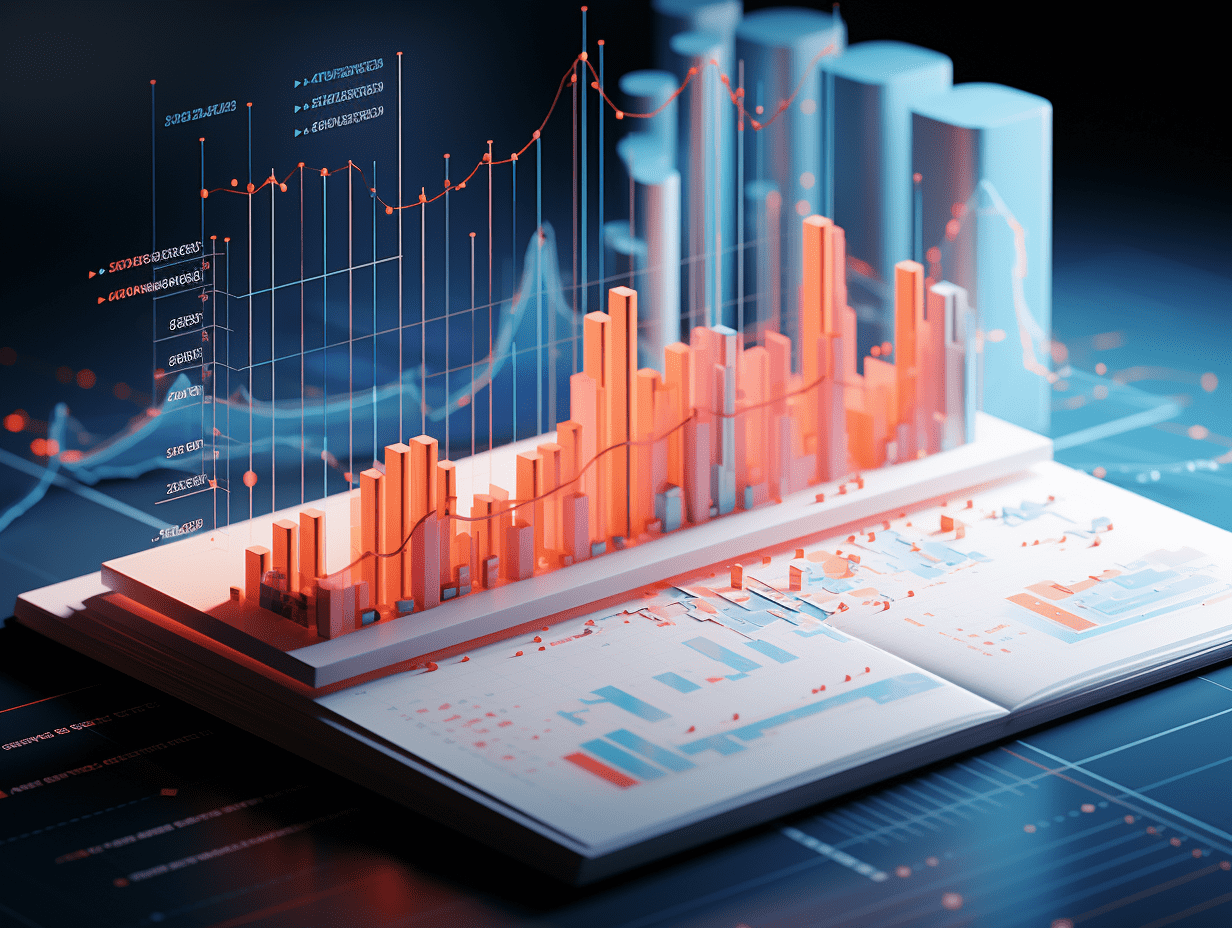Retail giants are concerned about the slowdown of consumer spending, is the US economy waiting to stall?
Despite the prolonged problem of inflation eroding spending power, Americans are still consuming. However, the largest retailers in the US are warning of the danger of a slowdown in this party. Walmart (WMT.US), Target (TGT.US), and Home Depot (HD.US) all exceeded Wall Street's expectations for second-quarter profits. This reinforces the image of consumers' resilience, especially after the retail sales data for July in the US exceeded expectations and most major categories experienced growth.
But there are also signs of weakness, as retail executives carefully express their concerns about the remaining time in the year. Consumer interest in large items and non-essential goods has yet to recover, which has dragged down sales for Target and Home Depot, despite better-than-expected profits. In addition, executives warned that high interest rates and new pressures such as student loan repayments may weaken consumer confidence in the second half of the year.
Walmart CEO Doug McMillon summarized the economic strength of customers during a conference call with analysts on Thursday, stating, "Work, wages, and anti-inflation are helping our customers. But rising energy prices, the resumption of student loan payments, higher borrowing costs, tightened lending standards, and a reduction in excess savings mean that family budgets are still under pressure."
Indeed, the excess savings caused by the pandemic and the wage growth in a historically tight labor market have been driving consumption for some time. However, as savings gradually decrease, consumers are turning more to borrowing. Wage growth has slowed down compared to its peak last year. McMillon is concerned that student loan repayments will resume in October, which will impact the spending power of millions of households.
This is also a major risk for Target, as signs of less active consumers are most apparent. The retailer's sales saw the largest decline in nearly seven years, due to declining demand in categories such as clothing, home goods, and luxury items (including electronics and toys). Despite strong second-quarter profit performance and strong sales of food and beauty products, the company has lowered its full-year profit forecast and emphasized caution about its outlook. Target's Chief Operating Officer, John Mulligan, said during the earnings conference call, "Consumers remain very cautious about discretionary spending."
For Home Depot, overall transaction volume has declined, and sales of large items such as patio furniture and major appliances are weak. CEO Ted Decker stated, "Concerns about a severe downturn have largely dissipated," while acknowledging that some shoppers have shifted more spending from goods to services since the outbreak of the pandemic.
Warning Signals
This is not the first time retailers have expressed concerns about consumer spending. In the first quarter of this year, corporate executives and economists expected an economic downturn, but so far, it has not materialized on a large scale. In fact, Walmart stated that the back-to-school shopping season started well, which usually indicates a good start to the holiday shopping season.
Of course, retailers may just be trying to lower investor expectations in order to benefit from the positive surprise later on. Despite their cautious comments, consumers may continue to surprise on the upside.
According to an index from the University of Michigan, overall sentiment has improved since June, driven by a strong labor market and lower inflation expectations. Consumers are still spending on services such as restaurants and airline tickets. According to data from the Federal Reserve, while credit card loans have declined, overall consumer borrowing exceeded expectations in June as they continue to borrow for car purchases and tuition payments.
However, the economic backdrop has changed in some key aspects since earlier this year. US credit supply has tightened, not only since the collapse of Silicon Valley Bank in March but also because banks have become more cautious in the face of the risk of an economic downturn in late 2022 or 2024.
Data from WalletHub shows that credit card interest rates in the US have soared to around 22%. While overall lending has increased according to Federal Reserve data, revolving credit balances, including credit cards, have declined for the first time in two years. This is an indication that extremely high rates are causing consumers to hesitate.
Job Market
There is also evidence that consumers are downgrading their expenditure and seeking cheaper goods. Discount retailers TJX Companies (TJX.US) and Ross Stores (ROST.US) both reported better-than-expected same-store sales growth in the second quarter, and their expectations for the remainder of this year are also strong. Mortgage rates in the US have also risen, with the average contract interest rate for a 30-year fixed-rate reaching 7.09%, the highest level since 2002. This limits extra spending for homebuyers. A report from the Federal Reserve Bank of San Francisco showed that Americans' accumulated excess savings since the start of the pandemic are expected to be used up by the end of the third quarter.
The strong labor market has supported the optimism and spending of Americans, with the July unemployment rate in the US dropping to a multi-decade low. However, wage growth is slowing down, and wage growth, which was still high by pre-pandemic standards, has weakened by nearly half since 2020 to 4.4% in July.
As the US economy remains resilient, concerns about a resurgence in inflation persist, and this resilience hides the threat of inflation rising again and further rate hikes. Recent rebounding oil and gas prices reaching new highs this year, the first rebound in the super-core inflation index (excluding housing and energy) since the start of the year in July, PPI data in July higher than expected (the year-on-year growth rate is the first rebound since August last year), and signs of a warming US housing market are still hindering inflation from falling back to the Federal Reserve's 2% target.
Despite the Fed's continuous year-long rate hikes, the surge in retail sales in July provides further support for some policymakers to raise rates again in the last four months of this year and has pushed the yield on 10-year US Treasury bonds to its highest level since 2008. Rising yields are generally seen as having a negative impact on US stocks. However, it is not yet clear how high these rates need to rise to have such an effect, which largely depends on the pace of the rate increases.Despite the rise in the 10-year yield from its low point of 2.79% on August 15, 2022, the US stock market has still managed to achieve growth in the first half of this year. Now the concern is that if the 10-year yield further increases to above 4%, it will continue to raise the capital costs for small businesses and consumers and make the stock market more unstable. Quincy Krosby, Chief Global Strategist at LPL Financial, said, "This good news is actually bad news, as Tuesday's retail data has 'shocked' both the already sensitive bond market and the stock market."
Although the market has been increasingly calling for a "soft landing" of the US economy, the US economic outlook is not without risks. One of the risks is that if inflation heats up again in a situation where the economy is underperforming expectations, the Federal Reserve may need to adopt stricter tightening policies, which will trigger a recession that Fed officials hope to avoid, and the persistently strong job market undoubtedly increases the possibility of this risk occurring.
Lawrence Werther, Chief US Economist at Daiwa Capital Markets, stated, "Everyone is waiting for the other shoe to drop on consumers. Credit tightening, a weak job market, and reduced savings will all result in a slowdown in consumer spending. The warnings issued by corporate executives are timely."
Related Articles

US Stock Market Move | Netskope (NTSK.US), a cybersecurity company, debuts on the US stock market with an opening price of $23.

The U.S. Supreme Court will hear oral arguments on the Trump tariff case on November 5th. The risk of a trillion dollar tax refund could trigger market volatility.

US Stock Market Move | AMD (AMD.US) fell over 2%, NVIDIA Corporation and Intel Corporation cooperating may pose a competitive challenge to AMD.
US Stock Market Move | Netskope (NTSK.US), a cybersecurity company, debuts on the US stock market with an opening price of $23.

The U.S. Supreme Court will hear oral arguments on the Trump tariff case on November 5th. The risk of a trillion dollar tax refund could trigger market volatility.

US Stock Market Move | AMD (AMD.US) fell over 2%, NVIDIA Corporation and Intel Corporation cooperating may pose a competitive challenge to AMD.

RECOMMEND

Three-Year R&D Spend Drains RMB 2.4 Billion, Urgent Cash Needs Drive Maiwei Biotech Back to Hong Kong Amid Compliance Scrutiny
18/09/2025

Why Generating Profit Remains Challenging for Lidar Companies
18/09/2025

SEC Adopts Landmark Rule to Restrict Shareholder Class Actions in Bid to Revive IPO Market
18/09/2025


